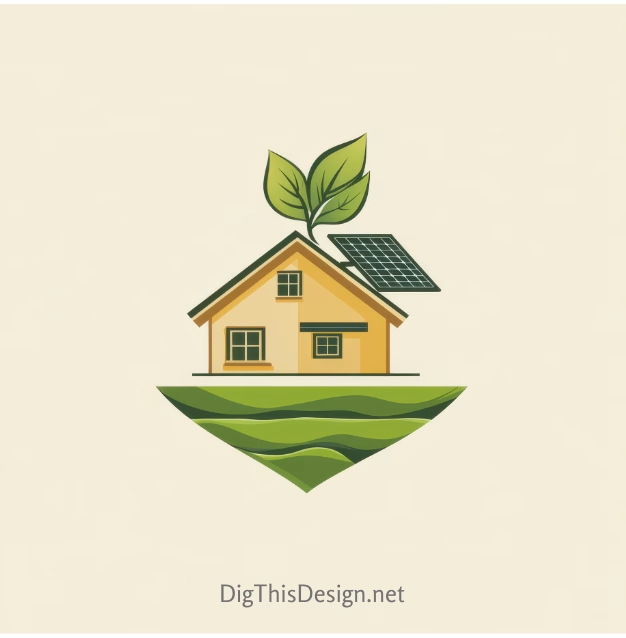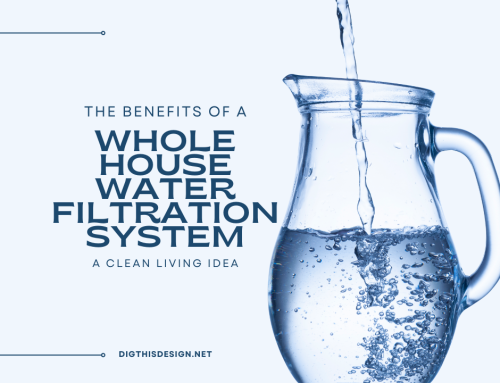Living in Florida all my life, my clients and I rely on an efficient cooling system to keep Florida homes comfortable. A passive cooling system uses the natural flow of air and heat to keep spaces comfortable without relying on mechanical passive cooling strategies or equipment. As a construction professional, I believe that by working with the climate instead of against it, these systems lower energy use, cut costs, and create long-lasting comfort.
Today, I share passive cooling strategies that work.
Creating a Cooler, Greener Home Through Sustainable Living

What Is Passive Cooling
Passive cooling is the art and science of keeping a building comfortable without powered air conditioners or mechanical ventilation, instead relying on natural forces, like wind, shade, and heat flow, to move warm air out and keep cooler air in. Heat moves from warmer areas to cooler ones, and air flows from high-pressure to low-pressure zones. Passive cooling shapes this flow through smart design.
A passive cooling system does this by orienting a house to catch prevailing breezes, using overhangs to block harsh sun, and choosing materials that don’t store excess heat. Once the building is designed right, the cooling happens automatically, all day, without flipping a switch, an architectural equivalent of sailing instead of motoring, harnessing what’s already there rather than burning fuel.
It works by directing how heat moves and air flows, using features like cross-ventilation, stack effect, thermal mass, and strategic shading. A wind tower can scoop cooler upper-level breezes and funnel them into passive cooling techniques in buildings indoors, while a vented roof ejects rising hot air. These ideas aren’t new; 19th-century stone farmhouses and Middle Eastern courtyards used the same principles. Modern materials simply let us apply them with more precision.
Passive Cooling Strategies for Sustainable Living
Passive cooling cuts energy use at its source, and in many warm climates, air conditioning is the single biggest drain in homes. By reducing or eliminating the need for AC, it directly lowers carbon emissions, reduces utility bills, and eases strain on the power grid, especially during heatwaves when blackouts are more likely.
It’s also a resilience strategy: if the power goes out in summer, a passively cooled home stays comfortable much longer than a sealed, mechanically cooled one. Because it works silently and without moving parts, it requires no maintenance and lasts as long as the building itself.
Cooling is the fastest-growing energy demand worldwide, with the IEA predicting AC use could triple by 2050, requiring the equivalent of all of today’s electricity capacity in the U.S., EU, and Japan combined. Passive cooling slows that trend while changing how a home feels.
In a passively cooled space, temperature shifts are gradual, avoiding sharp blasts of cold, “AC headaches,” or stale recirculated air. The comfort is whole-body rather than just “thermostat deep,” making it one of those rare win-wins that delivers lower bills, lower emissions, higher comfort, and zero ongoing maintenance, proof of how effective passive cooling techniques can be.
Design Strategies For Hot And Dry Climate
Hot, arid areas, like desert regions, need to block intense sun and keep precious moisture in the air. Thick, high-thermal-mass walls of adobe, rammed earth, or stone absorb heat during the day and release it at night when it’s cool, while deep shading and courtyards create sheltered pockets of cooler air.
Light-colored, reflective roofs deflect harsh solar radiation before it’s absorbed, and limiting openings on west and east walls reduces exposure to the most punishing sun. In these climates, the goal is to slow heat gain and store coolness overnight through proven passive cooling strategies.
Because hot-dry climates have big day-night temperature swings, you can “bank” coolness at night and use it during the day. Night purge ventilation, opening windows or roof vents after sunset, lets walls and floors store that cool air, carrying you through midday heat.
Earth tubes pull air through underground pipes where it cools before entering the home, and courtyard microclimates with fountains or shallow pools can lower air temperature by several degrees. Shade-first design ensures west and east walls stay protected, and pairing reflective roofs with heavy walls gives double protection: the roof rejects heat while the walls store cool, an approach often seen in passive geothermal cooling adaptations.
Passive Cooling Techniques in Buildings
Passive cooling isn’t a single trick but a set of interconnected principles working together like a living system, adapting naturally to heat and airflow. Orientation aligns buildings to maximize shade and natural ventilation from prevailing winds. Thermal mass control uses materials that either absorb heat slowly to delay heat gain or reflect it entirely. Shading and glare reduction through overhangs, pergolas, vegetation, and light shelves block direct sunlight without darkening interiors.
Cross-ventilation ensures air flows through rather than just in and out, while stack effect ventilation lets warm air rise and escape through high vents, drawing in cooler air from below. Insulation and air sealing keep unwanted heat out while allowing welcome breezes in.
Think of these principles as a cooling choreography. Some elements deflect heat before it enters through shading or reflective surfaces. Others delay heat transfer with thermal mass and insulation. Certain features dump hot air out via the stack effect or night purging, while others draw in cooler air from windcatchers or shaded courtyards. Finally, daylight is diffused without heat build up through light shelves or filtered skylights. When all of these work together, the building doesn’t just resist heat; it uses it to trigger cooling airflow, achieving a form of passive geothermal cooling when combined with earth-based temperature regulation.
Passive Design Strategies For Warm And Humid Climate
Humid regions, tropical or subtropical, face a different challenge: trapped heat and stagnant, moist air. The priority is constant air movement and moisture control. Elevated structures on stilts or raised foundations let air circulate underneath, while large operable windows on opposite walls maximize cross-ventilation.
Ventilated roofs or attics prevent heat build up above living spaces, and deep overhangs or verandas block rain and sun so windows can stay open. High ceilings with clerestory vents allow hot air to rise and escape, and shading vegetation cools the air through evapotranspiration, a feature often enhanced with passive cooling technology.
Here, design is about flushing out hot, moist air before it settles. Ventilation staging, placing openings at both body level and ceiling height, sweeps away heat and humidity. A high vent ratio, with windows or louvers equal to 20-40% of floor area, boosts airflow.
Breathable walls made of bamboo screens or perforated blocks let breezes in without sacrificing privacy, and double roofs with a ventilated gap stop radiant heat before it reaches the ceiling. Passive cooling here is as much about removing moisture as heat; even a shaded pond or green wall can make a space feel cooler by lowering radiant heat.
What Type Of Component Provides A Passive Cooling Solution?
Reflective roof coatings, or “cool roofs,” bounce sunlight away, while high-thermal-mass materials like concrete, brick, and stone work well in climates where night cooling is possible. Operable shutters and louvers let you control airflow and sun exposure instantly, and green roofs or walls add insulation, shade, and natural evaporative cooling.
Low-E glass reduces heat gain without sacrificing light, and ventilation hardware, ridge vents, solar chimneys, and windcatchers enhance air movement. A thoughtful mix of these can make even existing buildings noticeably cooler without active systems, demonstrating the adaptability of passive cooling technology.
Beyond the usual brick and awnings, phase-change materials store excess heat by melting at a set temperature, then release coolness at night as they solidify. Biosolar roofs pair solar panels with deep shade over an insulated green substrate, while hollow-core ventilated slabs channel cool night air through concrete mass.
Smart glazing films can shift from clear to reflective as temperatures rise. Far from being just modern green trends, many of these techniques have long been used in military field structures and desert hospitals, illustrating the timeless versatility of passive cooling techniques in buildings.
Using Passive Cooling Technology in Renovations
You don’t have to rebuild from scratch to benefit from passive cooling. Adding shading with exterior awnings, pergolas, or strategically planted trees can make a big difference, as can improving ventilation paths by creating new openings or adding transom windows above doors. Reflecting heat away with light-colored or reflective coatings on roofs and walls, venting the attic through ridge, soffit, or gable vents, and using thermal curtains or blinds during peak sun hours all help reduce indoor heat.
Upgrading windows from single-pane to low-E or double glazing further improves performance. Even small changes, like shading a west-facing window, can noticeably boost comfort and lower cooling bills using accessible passive cooling strategies.
To make these changes more effective, start by mapping hotspots, identify which rooms get hottest and when, then target solutions there first. Layer shading with both fixed elements like awnings, and seasonal ones, such as deciduous trees or removable sails.
Retrofit for better vent pathways by adding high wall vents or converting unused skylights into vented openings. Recoloring the roof with a reflective coating can drop surface temperatures by 30-50°F in just an afternoon. Upgrading fixed window panes to operable versions encourages cross-breezes. When stacked together, these small interventions create a compound cooling effect without major renovations, bringing passive geothermal cooling and other passive cooling techniques within reach for many homeowners.





